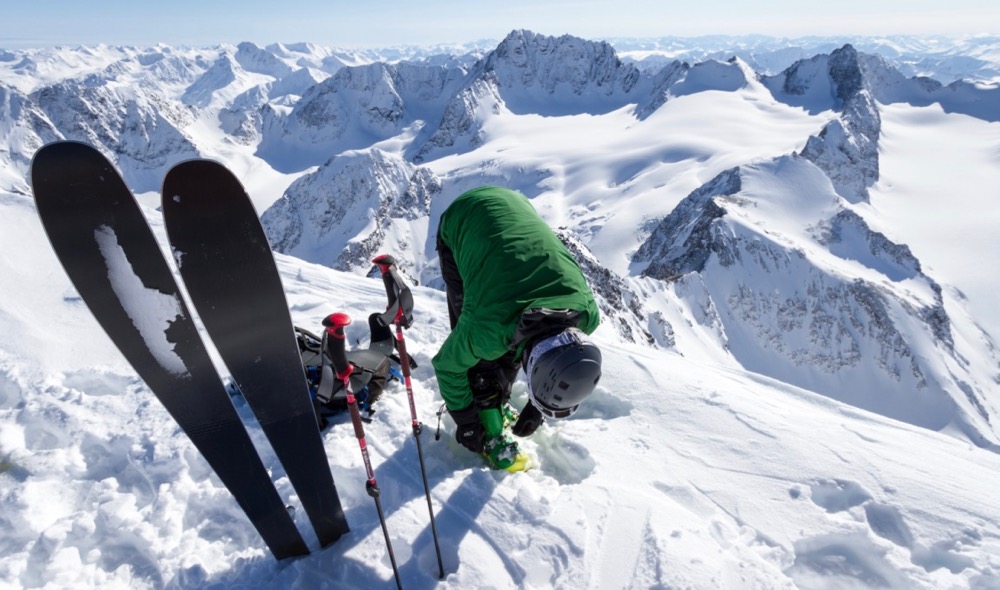The World According to Winter Wildlands Alliance
Photo credit: Luc Mehl
Outdoor Alliance is a coalition of groups that represent human-powered outdoor recreation across the country. Paddlers, hikers, climbers, mountain bikers, and backcountry skiers come together to protect the places they care about. Our new blog series looks at how each of these groups is looking at public lands today, what they think are the biggest threats, what people who love the outdoors are doing well, and where we go from here.
Winter Wildlands Alliance is a national nonprofit organization dedicated to promoting and preserving winter wildlands and a quality human-powered snowsports experience on public lands. We are an alliance of over 100 grassroots environmental organizations and backcountry partners working through education, outreach and advocacy. Our SnowSchool program engages over 34,000 kids annually in science-based field trips and education across 60 sites nationwide. Our Backcountry Film Festival, premiering every November in Boise, Idaho, tours over 100 locations worldwide and raises over $180,000 for local mountain communities.
How did Winter Wildlands Alliance get started?
Winter Wildlands Alliance was founded in February 2000 by three grassroots groups (in Idaho, Colorado, and California) who were concerned about the increasing loss of quiet backcountry in national forests and saw the need for a collective voice to advocate on issues that impact the winter backcountry. Winter Wildlands Alliance is the first and only national organization working on behalf of skiers, snowshoers, snowboarders, winter mountaineers and other backcountry adventurers.
Photo credit: Kt Miller
For Winter Wildlands Alliance, what are the biggest public land policy issues?
We’ve worked for years to preserve places where skiers, splitboarders, snowshoers and other human-powered winter explorers can find refuge on public lands, in wilderness and roadless areas as well as in more accessible non-motorized frontcountry zones. Right now, the biggest policy issue that we work on is in the realm of how public lands are managed. In our experience, proactive planning and intentional management by agencies such as the Forest Service is absolutely essential to preserving the experiences our constituents seek. Wild places, natural soundscapes, and the opportunity to experience winter on its own terms are all experiences that are steadily eroded over time if there is not an intentional effort to preserve them. Right now we’re at an interesting time in public lands history — on one hand, there’s a lot of exciting work going on across the country, with the public and Forest Service working together to plan out the future for many of our public lands — yet at the same time we’re seeing unprecedented attacks on the public process and the environmental laws that provide for that process.
What’s a recent success for Winter Wildlands Alliance?
As a direct result of efforts by Winter Wildlands Alliance with our partners and grassroots groups, national forests in California, Idaho, and Wyoming are now working on winter motorized recreation plans that designate areas and trails for snowmobile use in a manner that minimizes user conflicts between motorized and non-motorized uses, protects wildlife, and protects wildlands. These forests are at the frontlines of a national sea change in how the Forest Service manages undeveloped/backcountry winter recreation as populations and users increase. Every National Forest in the snowbelt will eventually go through this planning process, and it represents the first opportunity skiers have ever had to exert comprehensive influence over how public lands are managed in winter for decades to come.
Other successes this past year include partnered efforts to push back against fee hikes in national parks and mining proposals on the edge of Yellowstone, to save Harriman State Park in Idaho and Bonanza Flats in Utah’s Wasatch Mountains.
“Our favorite thing is to be outdoors in winter, sliding over or trudging through deep snow under our own power. The quiet, natural soundscapes of wintertime—squirrels chattering in the woods, wind sweeping across high mountains and valleys, clear water dripping from icicles—provides us with a necessary antidote to our crazy, modern, technologically-driven lives. ”
What’s one of your inspirations for protecting public lands?
Our favorite thing is to be outdoors in winter, sliding over or trudging through deep snow under our own power. The quiet, natural soundscapes of wintertime—squirrels chattering in the woods, wind sweeping across high mountains and valleys, clear water dripping from icicles—provides us with a necessary antidote to our crazy, modern, technologically-driven lives. These are our watersheds and our spiritual redoubts. The more time we spend out in these places, on their own terms, the more we recognize their fragility, and the fundamental importance of doing everything we can to protect what’s left of them for future generations.
Photo by Adam Clark
What do you think the future of public lands looks like?
We worry about ever-increasing user conflict and the impacts of unmanaged motorized recreation on our public lands as populations increase, and as urbanization and technology encroach further and further into formerly wild landscapes and ecosystems. And of course we worry a lot about the twin threats of climate change and drought and how to mitigate their impacts on landscapes, species, watersheds and recreational opportunities through adaptive management scenarios.
What’s the most important thing that backcountry skiers need to know about how to make a difference?
Together, we all own the public lands where we love to play and explore and find refuge. The people who manage our lands for us—the folks at the US Forest Service, the Park Service, the Bureau of Land Management—as well as our elected officials at the local level and in Washington DC, need to hear from us often and specifically about how they can do a better job of funding and taking care of these places. For today and for the long term. Visit our Action Center to take action today.



